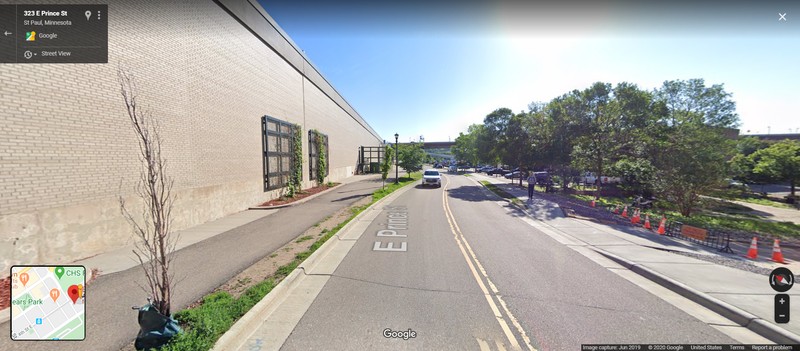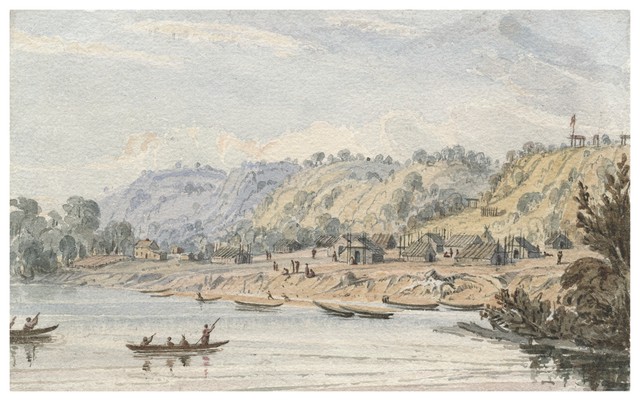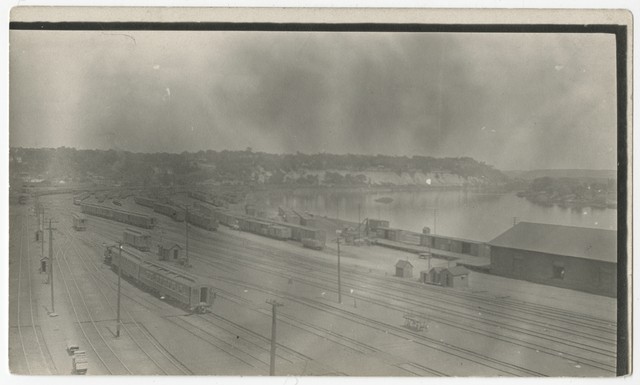Understanding the Land: Trout Brook Valley
Introduction
Text-to-speech Audio
Images
Looking east toward Trout Brook Valley

Little Crow's Village, painted by Seth Eastman after removal from Trout Brook Valley (1846-1848)

Union Depot railyards through the valley (1915)

Backstory and Context
Text-to-speech Audio
Stand across from the Northern Warehouse building and look east toward the broad, low-lying plain beneath the Hwy 35E overpass. That was once a valley where two tributaries of the Mississippi River--Trout Brook and Phalen--converged and it was the reason Lowertown could become a hub of steamboat and rail transportation.
- Trout Brook attracted generations of human settlement before the 1850s streamboat era including Dakota leader Little Crow's first village of Kaposia, which was located here until the Treaty of 1837 forced him and his band to relocate across the river.
- Trout Brook was also where early American colonists fished, got drinking water and milled lumber and flour.
The brook, which merged in this valley with Phalen Creek, helped shape the Lower Landing and created a flat plain onto which railroads easily constructed the tracks that brought trains in and out of Saint Paul. So what happened to Trout Brook?
- Late-19th century development and industrialization in Lowertown transformed the brook into a fetid sludge of raw sewage and dangerous factory waste, so the city decided to raise the valley floor with ten feet of fill and reroute the brook underground, making way for the massive Union Depot rail yard.
- After railroads began removing tracks and sheds from the valley in the 1970s, area residents used it as an illegal dump for nearly 30 years. In the early 2000s the valley was clean up, restored to its natural habitat and reopened to the public as the Bruce Vento Nature Sanctuary.
Sources
Blue Stem Heritage Group. History of Trout Brook Valley, Issu. February 12th 2013. Accessed August 4th 2020. https://issuu.com/capitolregionwd/docs/history_of_trout_brook_valley__feb_12__2013.
Millett, Larry. Lost Twin Cities. St. Paul, MN. Minnesota Historical Society Press, 1992.
Trimble,Steve. “Discover the Bruce Vento Nature Sanctuary,” Saint Paul Historical, accessed August 4, 2020, https://saintpaulhistorical.com/items/show/7.
Trimble, Steve. “There Once Was a Kaposia Village,” Saint Paul Historical, accessed August 4, 2020, https://saintpaulhistorical.com/items/show/115.
Minnesota Historical Society
Minnesota Historical Society
